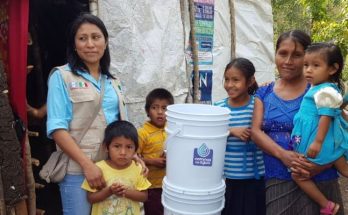By Romeo Robles
Background: What is the Acuaférico?
For residents of San Miguel de Allende, maybe you have noticed an increase in urban development over the last couple of years? The ‘Acuaférico’ is a response to that – a municipal water project aimed at meeting the increasing water demand expected in San Miguel over the coming years due to projected urban growth.
Through the drilling and interconnection of six new and existing wells, creating a network of 12km (~7.5 miles) of piping – all operated through a brand new remote control center – the local water authorities in charge of the project (SAPASMA for its acronym in Spanish) are looking to bring more water into the new urban developments as well as to the already existing municipal water system. The six interconnected wells, located close to the Presa Allende, pump water up to a newly constructed plant, called the Cárcamo (located close to the Unidad Deportiva). In total, the water is pumped upwards of 285 meters high (~935 feet) where it is then redistributed to developments in the western and northwestern upper parts of the city. The goal of this massive infrastructure project is to help provide urban San Miguel with enough water, but only until 2041.
The Acuaférico has been full of controversies since its inception due to lack of transparency regarding its construction, operation costs, federal permits, lack of environmental studies, potential impact on surrounding rural communities, and lack of water quality and quantity analyses being made available to the public. In fact, it was only recently, after the project was already well underway, that the citizenry of San Miguel learned about the financial cost of the Acuaférico.
Why is this Project a Potential Threat to Our Water Quality?
Water contamination is directly linked to the over-extraction of our aquifer. Our region – the Upper Rio Laja Watershed – has been overexploited relentlessly for the past five decades. We’ve gone from having just around 600 wells in the 1960’s to more than 3,500 wells in 2021 (this without taking into account illegally drilled wells).
The more wells we drill, the deeper our water table drops. Annually, the aquifer is falling 2-3 meters (~6-7 feet). This is forcing us to dig wells deeper in order to reach the vital resource. Unfortunately, at these profound depths, water is highly contaminated with naturally-occurring chemicals such as arsenic and fluoride, a phenomenon that has stretched all across Northern Guanajuato – threatening a population of around 680,000 people, including the residents of the city of San Miguel.
Further complicating the issue, the exploitation of groundwater in such a condensed area – like the multiple wells being drilled around the Presa Allende for this project – has shown to specifically increase levels of arsenic in other parts of the world that are also affected by this contaminant due to a cone of depression that is created, which can expose more soil to oxygen and release more arsenic into the water.
In addition, given the new wells’ proximity to the Presa Allende, we have concerns about the potential introduction of new contaminants, specifically organic chemicals, like pesticides, from agricultural runoff. Historically, we have not been as concerned about these chemicals for a variety of reasons, but this new project now brings that issue into question.




